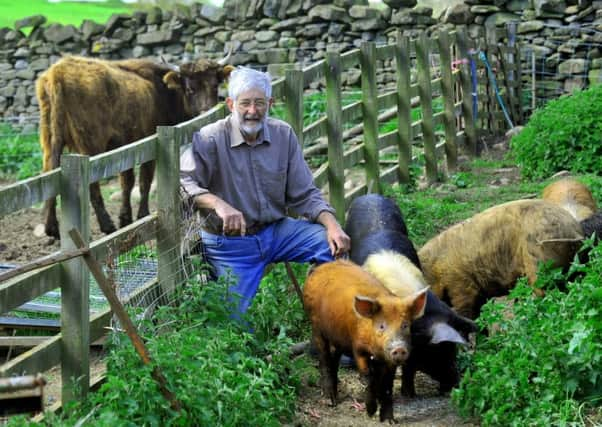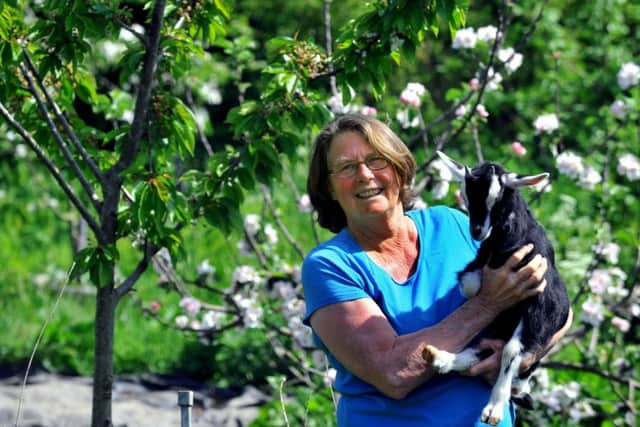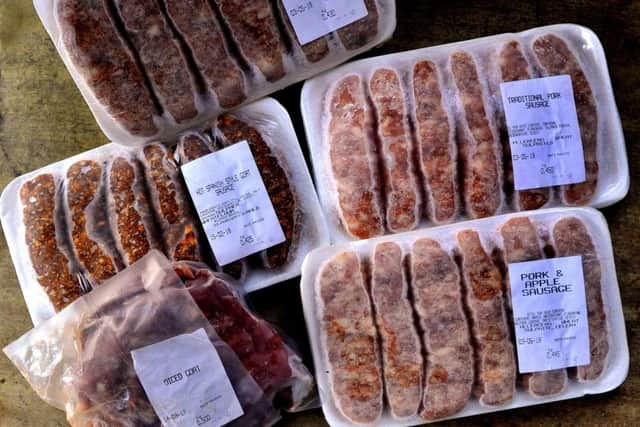Bob and Margaret Stanbridge find success in pigs and goats


There are those who believe their heyday was a decade ago, there are those who see the rush to farm shops as having quelled the rise of more markets and there are those who continue to support them avidly whether as stallholders or customers.
Bob and Margaret Stanbridge are self confessed devotees and presently have their Barton Farm Products stand at three farmers’ markets in Barnard Castle, where Bob is a director, Richmond and Masham, which is where I first caught up with them on the day when the Tour de Yorkshire came through the town.
Advertisement
Hide AdAdvertisement
Hide Ad“One of our regulars jokingly said ‘I see you’re still here, you can’t have won the lottery’,” says Bob.


“I told him even if I had I’d still be here because I love the farmers’ markets and all being well we will be adding a fourth one at Middleton in Teesdale soon as we’ve been asked to go there too.”
The Stanbridges have come to farming through a circuitous route that saw Rotherham-born Bob leaving his Doncaster childhood for an apprenticeship with the Blackburn aircraft factory in Brough near Hull where he worked on his passion, the Buccaneer.
Subsequent studies led to his MSc in engineering at Cranfield, a return to Brough and move to Fenner’s first in Hull and latterly Cleckheaton. A move to Northallerton was followed by he and Margaret setting up their own company Agricultural & Industrial Hydraulics.
Advertisement
Hide AdAdvertisement
Hide Ad“In 1995 we rented a smallholding and started making horse walkers. We made hundreds of them including greyhound walkers. They were mainly for small eventing yards and individuals. The catalyst for where we are today was wanting to have our own house, or as it is turning out, timber lodge in the countryside.


“Margaret and I were shopping in a supermarket one day and we fancied pork for a meal. We took a look at what was on display and it was pale and watery. That’s when we thought about going into pigs. What has happened since has all led from that moment.”
Iron Age and Saddleworth pigs, Saanen and Boer goats, Dexter cattle, Manx sheep, quail, ducks, geese and horses make up the veritable menagerie of animals on the five-acre smallholding known as Barton on Comfort Lane, three miles or so north of Richmond.
“It’s grown like Topsy,” says Margaret, whose academic career has included time as a mathematics and PE teacher. “As well as the farmers’ markets we also supply pubs and restaurants.
Advertisement
Hide AdAdvertisement
Hide Ad“The pigs and goats are in demand for our sausages and goat meat, in fact we currently can’t produce enough kids of our own to meet the demand so we’re having to buy in billy kids from a goat dairy farm near Northallerton.
“‘We love the lifestyle,’ says Bob. “People joke about us being The Good Life like the old TV series but we really enjoy it, although it is also hard work. We’ve now been granted planning permission after five years and have a genuine two-bedroom log cabin being imported from Estonia, which is put together like a giant Lego set, but in order to receive permission you have to achieve points that are in man hours for each animal. You have to reach 2,200 man hours per year.”
Iron Age pigs were Bob and Margaret’s first incursion into animal husbandry.
“They are a cross between a wild boar and a Tamworth. They are supposed to have been the type of pig that was around at the time.
Advertisement
Hide AdAdvertisement
Hide Ad“We’ve added Saddlebacks and have a Tamworth from our rare breeds specialist friend Lyn Arrowsmith. We’ve just reached the stage where we can fulfil demand for both sausages and goat meat throughout the year for the first time.
“The Iron Age sows produce litters of around four to five whereas the Saddlebacks produce a more customary eight to nine.”
The goats are Margaret’s department. They started with two Saanen nannies and Margaret currently has over 60 goats including Boer and British Alpine.
“We purchased a Boer billy 18 months ago and he’s serving all our nannies. We brought in the British Alpines when a friend who was showing the breed had some nanny kids that weren’t good enough to show.
Advertisement
Hide AdAdvertisement
Hide Ad“We also buy in from the dairy goat farm near Northallerton in batches of 10-16 at a time. Our goats often kid with twins and occasionally triplets. We kid from March onwards.
“We’re not very commercial in the sense that our old girls retire but stay with us rather than being moved on, but we’re pretty commercial in the sense that we supply not only our own farmers’ market stand but a growing number of outlets.
“Diced goat meat off the bone and other cuts are the in-thing. People everywhere are looking for it right now and television presenter Kate Humble has extolled goat meat in recent times. We also supply scotch egg specialist The Clucking Pig with goat and pork.”
Manx rams crossed on to Suffolk and Cheviot ewes produce lamb and mint sausages and burgers; and a herd of half a dozen Dexter breeding cows produce in demand beef that is supplied to family, friends and the White Swan pub in Gilling.
Advertisement
Hide AdAdvertisement
Hide AdQuail, ducks and geese make up the formidable arsenal of produce at Barton that is largely cut for them by Simpson’s of Cockfield.
The horses include three brood mares – two Thoroughbreds and one Clydesdale X Thoroughbred.
“We took on our first brood mare from Ireland when horses were being shot because farmers had lost their grants,” says Bob. “Horses brought about more points in terms of man hours and allowed us to get to our total a little quicker.
“We now sell our foals. We have six horses with another two foals due imminently.”